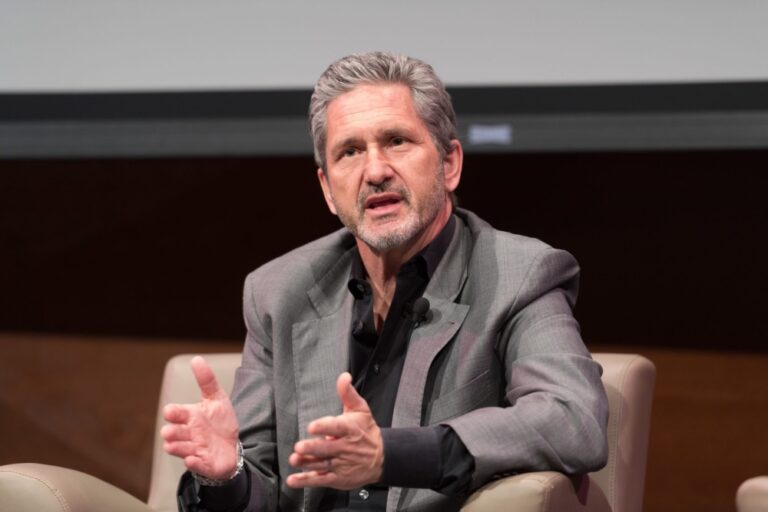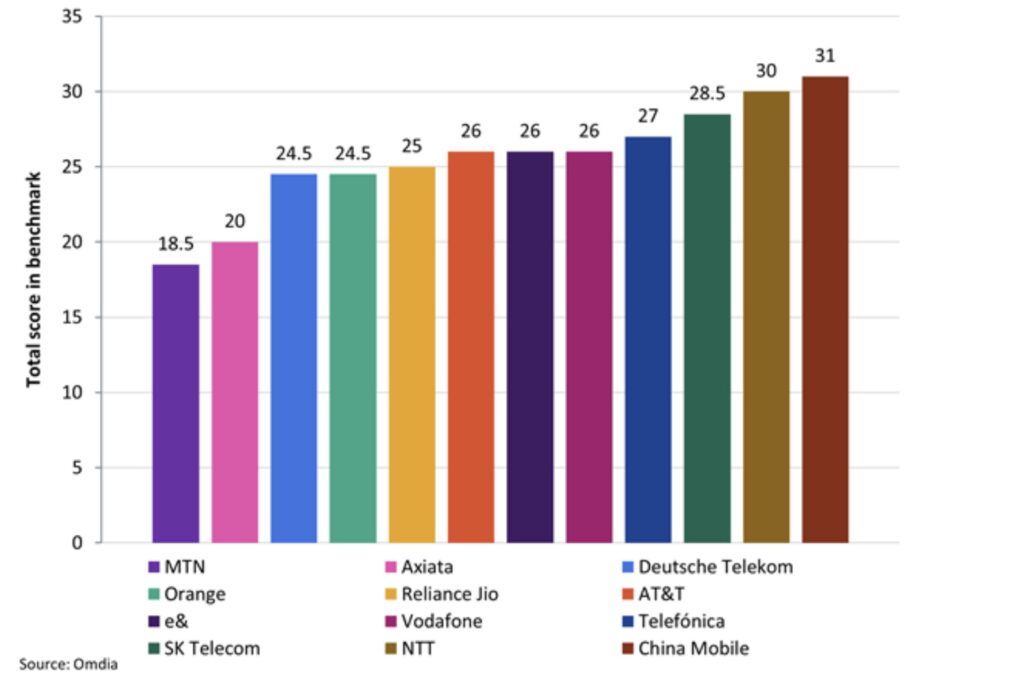After 4-17% price rises in its core markets last year, the company will be watching churn closely as it creates more value from its disparate operating companies
Liberty Global announced it was “on-track” to meet its full-year 2024 guidance metrics across all its operating companies, with price increases recently announced in the UK, the Netherlands and Belgium to support its financial targets. Management will however be trend-watching closely, after subscribers fell across its telco operating companies and joint ventures, with Liberty reporting a decline of 84,500 fixed line/video RGUs in its consolidated Q1 figures, plus even more in the joint ventures.
Speaking at the company’s 2024 Q1 results, CEO Mike Fries said the company had made “significant progress” against strategy to create and deliver value to shareholders – by proving the parts are greater than the sum – with Sunrise spin-off still looking good for Q4.
“Our fibre upgrade projects in the UK, Belgium and Ireland remain on track and nexfibre recently announced it had reached the milestone of one million premises built in the UK, as VMO2 fibre build capacity continues to ramp up,” he said. “Our overall financial performance in Q1 was in line with expectations, highlighted by the return to strong Adjusted EBITDA growth in the Netherlands and the return to positive broadband net adds in Switzerland.”
He added: “Fixed ARPU trends in the UK and Switzerland improved while our businesses in Belgium and the Netherlands each delivered continued fixed ARPU growth.”
Liberty Global’s Q1 revenue increased 4.1% YoY on a reported basis and 1.9% on a rebased basis to $1.95bn while net earnings increased 173.9% YoY on a reported basis to $527m. Adjusted EBITDA decreased 6.9% YoY on a reported basis and 6.8% on a rebased basis to $581.4m and Fries highlighted the telco group’s healthy liquidity of $4.7bn comprising nearly $1.2bn of cash, $2bn of investments held under SMAs and $1.5bn of unused borrowing capacity.
VMO2 sees some declines
In the UK, VMO2’s fixed customer base declined by 2,000 in Q1, primarily driven by a reduction in gross adds, as a slowdown in customer activity in the fixed market offset growth in nexfibre areas. VMO2’s premium fixed ARPU was broadly stable for the second consecutive quarter ahead of price rises being implemented in Q2. The broadband base grew by 5,300 in Q1, while growth in broadband speeds continued, as average download speed increased 17% YoY to 368Mbps. VMO2 became the first major UK provider to publicly launch a residential 2Gbps service in February.
In mobile, the postpaid base declined by 74,500 in Q1, driven by a reduction in handset sales and disconnections related to the decommissioning of a legacy billing system. During Q1, VMO2 built 194,000 premises, the majority of which were FTTH homes built for the nexfibre JV, representing an increase in build pace of 80% YoY.
VMO2’s revenue – in US GAAP terms – increased 3.8% YoY on a reported basis and decreased 0.5% YoY on a rebased basis to $3.3bn. The rebased decrease was primarily due to the net effect of an increase in other revenue due to low-margin construction revenue from the nexfibre JV and a decrease in mobile revenue due to lower handset sales, plus a decrease in B2B fixed revenue. Q1 adjusted EBITDA increased 4.6% YoY on a reported basis and 0.3% YoY on a rebased basis to $1.1bn.
Sunrise holding its own
Liberty’s Swiss subsidiary – for now – delivered 6,200 broadband net adds, primarily driven by an improved main brand performance from customer loyalty initiatives. In mobile, Sunrise delivered 26,000 postpaid net adds. FMC penetration remains high at 59% across Sunrise’s broadband base.
Sunrise’s revenue in Q1 was $854m – up 5.8% YoY on a reported basis but flat on a rebased basis. The flat rebased result was mainly due to the positive impact of last year’s July price rise and continued momentum in mobile subscription and B2B, offset by lower handset revenues. Adjusted EBITDA increased 6.2% YoY on a reported basis and 0.4% on a rebased basis to $279.3m.
“We have started 2024 with a strong operational and solid financial result. We continued our growth momentum in mobile postpaid despite a generally less liquid market compared to the previous year. At the same time, we achieved strong net growth in broadband driven by increased customer loyalty,” said Sunrise CEO André Krause. “Overall, we are well on track, fully confirm our guidance for the 2024 financial year, and expect positive effects of operational cost optimization in the following quarters. Finally, we look forward to being listed on the Swiss stock exchange soon.”
Telenet has a steady start to 2024
In Belgium, Telenet’s postpaid mobile base declined by 800 while its broadband base declined by 6,000 – with Liberty putting this down to the “intensely competitive market environment”, which more than offset the improved sales performance from Telenet’s latest marketing campaigns. Wyre, Telenet’s NetCo partnership with Fluvius, in which it holds a majority 66.8% stake, is on track to achieve its FTTH rollout plan, while continuing to “explore ways in which it can maximize efficiency of such rollout”. FMC penetration remains high at 49% of the broadband base. In April, Telenet extended its digital ecosystem through Blossom, an “all-in-one” digital solution for the installation of charging stations and smart charging for electric cars.
Telenet’s revenue increased 1.1% YoY on a reported basis but decreased 0.5% on a rebased basis to $762.6m. The rebased decrease was primarily driven by the decrease in B2B wholesale revenue after losing VOO, a decline in the fixed customer base and lower interconnect revenue, partially offset by the benefit of the June 2023 price rise. Adjusted EBITDA increased 1.8% YoY on a reported basis and 0.2% on a rebased basis to $308.4m, primarily due to the net effect of lower programming and interconnect costs and lower energy costs – partially offset by higher staff-related expenses following the mandatory 1.5% wage indexation as of January 2024 and growth in the overall FTE base.
VodafoneZiggo confirms guidance
In the Netherlands, VodafoneZiggo saw FMC net adds increase by 22,700 to almost 2.7 million in Q1. FMC penetration remained stable at 48%. Mobile postpaid net adds grew 22,300 alongside growth in mobile postpaid ARPU of 3.4% YoY supported by the price rises implemented in October. The broadband base contracted by 23,500 in the quarter, a 3,000 improvement compared to Q4, as a 26,600 decline in Consumer was only partially offset by a 3,100 increase in B2B.
The telco’s revenue increased 2.8% YoY on a reported basis and 1.6% YoY on a rebased basis to $1.1billion in Q1. The rebased increase was primarily due to continued growth in mobile and B2B fixed revenue, partially offset by a decline in the B2C fixed customer base. Adjusted EBITDA increased 10.1% YoY on a reported basis and 8.8% on a rebased basis to $519m. The rebased increase was primarily driven by lower energy costs and the phasing of wage increases.
“We maintained customer growth in mobile and B2B in the first quarter of the year and our broadband performance continued to show improvement quarter-on-quarter, underpinning our belief that we are executing the right strategy to provide the best network and entertainment experience for our customers,” said VodafoneZiggo CFO Ritchy Drost. Preparations are well underway for broadcasting all UEFA club football matches exclusively through our Ziggo Sport channel and Ziggo Go app this summer.”
He added: Adjusted EBITDA has returned to growth, underpinning Q1 financial performance and our 2024 guidance which we remain on track to deliver. On behalf of the company, I would also like to thank Jeroen Hoencamp who has stepped down as the CEO of VodafoneZiggo from 1 May 2024. Through his strong leadership, Jeroen leaves VodafoneZiggo in a good shape, with a strong position in the Dutch telecom market and a solid financial foundation, including its balance sheet.”












